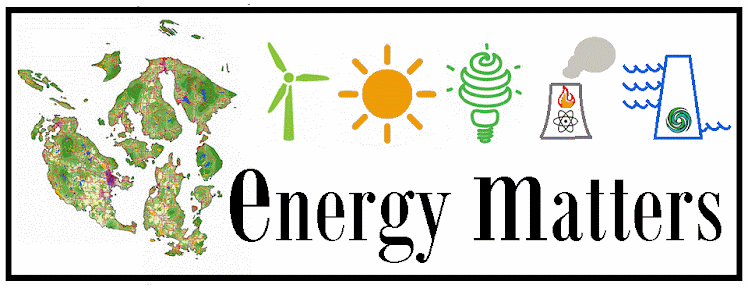
Chris Greacen, Islands Energy Coalition
Did your energy bill put a big dent in your wallet this past winter? What if your home actually produced more electricity than it consumed? Despite an unseasonably cloudy and wet year, between 16 March 2010 and 15 March 2011 four homes at the Common Ground community on Lopez actually did just this. The homes are those of Karan Yvonne, Faith Van De Putte, Donna Hasbrouck, and the family of Chom, Chris, Ty and Sara Greacen.
The homes make their electricity from solar panels which generate electricity when the sun shines. If the solar panel makes more electricity than the home is using, electricity is exported to OPALCO’s grid and ‘banked’ for future use. During the summer time, the homes generated a considerable surplus. During the winter time, the homes drew on this banked surplus to power lights, washing machines, electric ovens, heaters, and other appliances.
 A home that generates as much electricity as it consumes is said to be “net zero”. To help meet the net zero goal, conserving energy is key. The homes are exceptionally well insulated, with R-50 insulation in the ceilings, R-45 strawbale walls, and double-pane windows. The homes are so well insulated that the body heat of the occupants provides a noticeable heat source for homes. South facing windows let in plenty of sunlight, warming the house even if it’s freezing outside. Heat collected from the sunlight is stored in concrete slab floors. Household hot water is heated by rooftop solar panels, supplemented by electricity. All the homes have energy efficient appliances including refrigerators, washing machines, and compact fluorescent lights.
A home that generates as much electricity as it consumes is said to be “net zero”. To help meet the net zero goal, conserving energy is key. The homes are exceptionally well insulated, with R-50 insulation in the ceilings, R-45 strawbale walls, and double-pane windows. The homes are so well insulated that the body heat of the occupants provides a noticeable heat source for homes. South facing windows let in plenty of sunlight, warming the house even if it’s freezing outside. Heat collected from the sunlight is stored in concrete slab floors. Household hot water is heated by rooftop solar panels, supplemented by electricity. All the homes have energy efficient appliances including refrigerators, washing machines, and compact fluorescent lights.
 User behavior is essential. The homes were able to meet the zero-net goal by turning off lights and appliances when not in use, by using clothes lines instead of electric clothes dryers whenever weather permitted, by minimizing electric heat use, and by lowering insulating shades over windows at night.
User behavior is essential. The homes were able to meet the zero-net goal by turning off lights and appliances when not in use, by using clothes lines instead of electric clothes dryers whenever weather permitted, by minimizing electric heat use, and by lowering insulating shades over windows at night.
OPALCO purchases any excess solar electricity that homes like this make in the course of a year. In addition, the Washington State Department of Revenue provides a payment of 15 cents for every solar kilowatt hour generated. This adds up: last August each household in Common Ground received a check for over $600 for electricity generated. Solar gets a US income tax credit equal to 30% of system cost. And it gets better: in May OPALCO will be launching an incentive program for renewable energy that will make systems like this even more attractive.
OPALCO has great incentives for energy efficient appliances, weatherization, and heat pumps. Or if you don’t know where to start, check out their webpage or sign up for a $25 Home Snapshot Energy Assessment.
As the Fukushima reactor continues to spew nuclear waste, it’s ever clearer that it is important to live lightly and reduce the energy we consume from power plants so that fewer of them need to be built in the first place. This can start at home, by using investing in energy, reducing waste, and even making our own.

Chris, hook me up in Seattle? -Jeremy
ReplyDelete